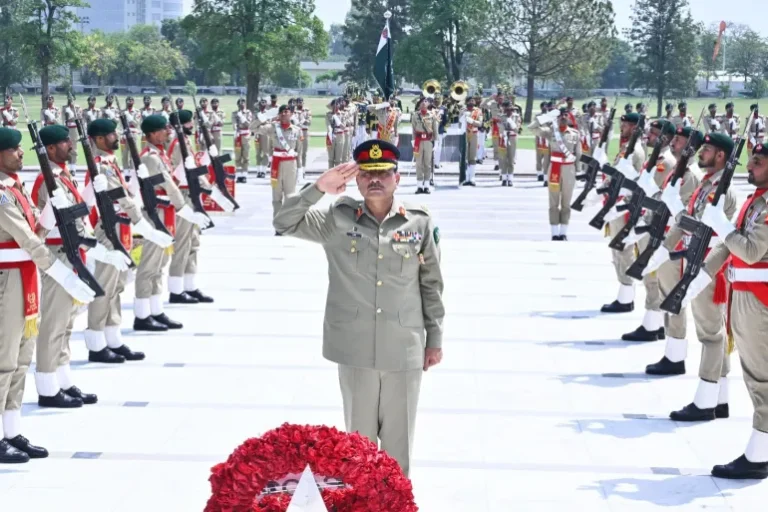Pakistan’s cabinet on Tuesday promoted Syed Asim Munir, the country’s chief of army staff, to the rank of field marshal, following the country’s recent military conflict with India.
That short but intense confrontation had brought the South Asian neighbours to the edge of their fifth war, as they launched missiles and drones towards each other over four days in early May.
Ultimately, a ceasefire on May 10, announced by United States President Donald Trump, pulled the nuclear-armed neighbours back from the brink after they each targeted the other’s military installations in missile strikes earlier that day.
Both New Delhi and Islamabad claimed wins in the conflict. And Pakistan’s government has drawn a direct link between those clashes and its decision to promote Munir.
So why was Munir promoted, what does the rank of field marshal signify, and what does the promotion portend for the future of Pakistan’s military leadership and its role in the country’s domestic affairs?
Why was Munir made field marshal?
According to a statement from Prime Minister Shehbaz Sharif’s office, Munir was promoted in recognition of his leadership of the army, with “exemplary courage and determination,” and for devising a strategy to counter Indian attacks.
“In recognition of his brilliant military leadership, courage, and bravery, ensuring Pakistan’s sovereignty and territorial integrity and courageous defence against the enemy, the cabinet approved the prime minister’s proposal to promote General Syed Asim Munir to the rank of field marshal,” the statement said.
The cabinet also granted a second extension to Air Chief Marshal Zaheer Ahmed Babar Sidhu, currently in his fourth year as head of the Pakistan Air Force (PAF), following a previous extension.
Talal Chaudhry, state interior minister, told Al Jazeera that the decision to promote Munir was based on his leadership.
“The Pakistani military was engaged on two flanks, fighting the menace of terrorism on our western borders, and during that, they also had to fend off our adversary on eastern flank, which has one of the world’s largest armies, and yet under Munir’s leadership, we came out on top decisively,” Chaudhry said.
How has Munir responded?
In a statement issued by the Inter-Services Public Relations (ISPR), the military’s media wing, Munir said he was humbled by the honour and dedicated it to the “entire nation, the armed forces of Pakistan, especially the civil and military martyrs and veterans”.
“This is not an individual honour but an honour for the armed forces of Pakistan and the entire nation,” he said.
A field marshal is the highest rank in armies – like Pakistan’s and India’s – that follow the British Army’s traditions.
How rare is the field marshal rank?
Very. In Pakistan, a full general – denoted by four stars – is usually the standard rank for the army chief and the chairman of the Joint Chiefs of Staff Committee (CJCSC), who convenes the heads of all three services: army, navy and air force.
Although the CJCSC role is open to any of the three branches, only army generals have held the post since 1997, with General Sahir Shamshad the current incumbent in the role.
Since gaining independence in 1947, Pakistan has had 17 army chiefs. Munir is only the second among them – after Ayub Khan – to be promoted to field marshal.
Ayub Khan became army chief in 1951 and seized power in a military coup in 1958. A year later, he promoted himself to field marshal while appointing General Musa Khan as the new army chief.
“A field marshal has his own insignia and their own stick which they carry with them. A field marshal does not have to respond to a salute, but instead they only have to wave the stick to acknowledge it,” Inam ul Rahiem, a lawyer and former military officer, told Al Jazeera.
Once conferred, the field marshal rank is held for life.
Does India have the field marshal rank, too?
Yes, and it is as rare in India as it is in Pakistan. Since 1947, the Indian government has awarded the title of field marshal to two generals.
The first was General Sam Manekshaw, who received the rank in 1973 for his leadership during the 1971 war with Pakistan that India won and that led to the creation of Bangladesh.
“Manekshaw led their army in exemplary fashion and the Indian Prime Minister Indira Gandhi, after the war, awarded him with the title of field marshal. Although he retired from the position of army chief in 1973, he retained the rank for the rest of his life, and attended official events in his uniform,” Rahiem said.
The second was Kodandera M Cariappa, India’s first post-independence army chief. He was awarded the title in 1986, three decades after retiring.
Cariappa, who led Indian forces during the country’s first war with Pakistan in 1947, was previously in the British Indian Army, like Ayub Khan. In fact, Khan served under Cariappa in 1945 when they were both posted in Waziristan, in present-day Pakistan.
How powerful is Pakistan’s military?
Pakistan’s army is considered the most powerful institution in the country, wielding deep influence across nearly every sphere of society. It has ruled the country directly for more than three decades since independence in 1947.
The army chief is widely seen as the single most powerful position in Pakistan, often overshadowing the elected civilian government. The military has long faced allegations of manipulating election results to support favoured candidates.
Munir’s predecessor, General Qamar Javed Bajwa, acknowledged the military’s history of political interference in his farewell speech in November 2022 but said that such meddling had ended.




